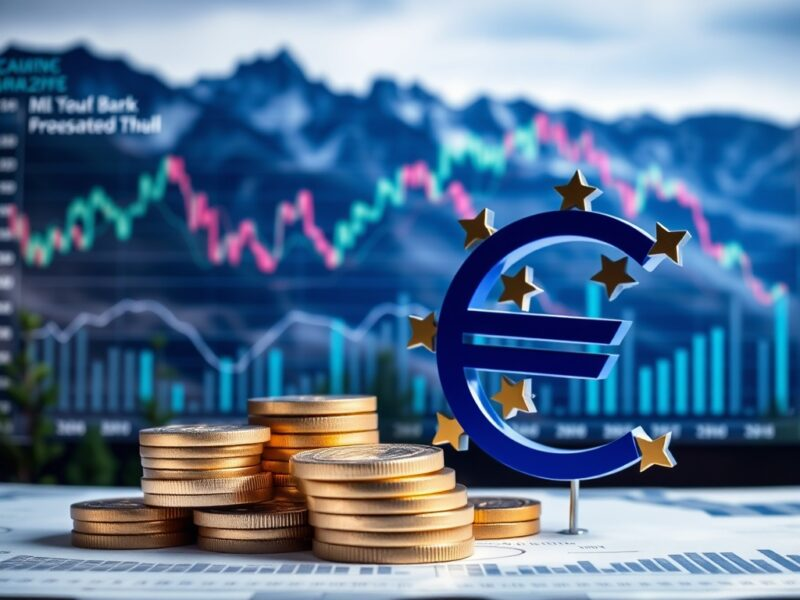based on materials from the website - By ItsBitcoinWorld

The financial world is buzzing, and not without reason. As the cryptocurrency market continues its fascinating dance, traditional financial indicators such as currency exchange trends often provide important context. Recently, the US dollar has shown notable strength, attracting attention from investors worldwide. This movement is not isolated; it is closely tied to expectations of significant economic events, particularly the upcoming symposium in Jackson Hole. For those navigating the volatile cryptocurrency landscape, understanding these macroeconomic changes is paramount, as they often influence overall market liquidity and investor sentiment.
Why is the US dollar strengthening? Its current trajectory is driven by several factors. First and foremost, the market is preparing for signals from the Federal Reserve, particularly regarding interest rate policy. During periods of global economic instability, the dollar often serves as a safe-haven asset, attracting capital from around the world. This demand naturally contributes to its value increase. The allure of assets as a safe haven: Concerns over slowing global growth or geopolitical tensions often prompt investors to seek a relatively safe asset - the US dollar.
Interest rate differentials: Expectations of higher interest rates in the US compared to other major economies make dollar-denominated assets more attractive.
Economic data: Stronger-than-expected economic data from the US, even if mixed, can bolster confidence in the American economy, supporting the dollar.
The dynamics of the dollar are a key barometer of global trade and investment flows, directly influencing everything from commodity prices to corporate earnings. For crypto enthusiasts, a strengthening dollar can sometimes signal reduced liquidity in broader markets, which may indirectly affect the valuation of digital assets.
The annual economic symposium in Jackson Hole is not just another conference; it is a key event in the global economic calendar. It is hosted by the Federal Reserve Bank of Kansas City and brings together central bank leaders, finance ministers, academics, and financial market participants from around the world. Why is this so important?
Historically, significant policy changes or further actions by the Chair of the Federal Reserve System have been announced in Jackson Hole. Markets hang on every word, seeking clues about the future direction of monetary policy, particularly regarding interest rates and quantitative easing or tightening. This year, the focus is on:
Inflation forecast: How central banks assess the persistence of inflation and their commitments to reducing it.
Economic growth forecasts: Analyzing the state of the global and domestic economy, as well as potential recession risks.
Future monetary policy: Any hints of rate increases, pauses, or even cuts, as well as a broader strategy for maintaining economic stability.
Recent changes in the dollar's exchange rate are a direct reflection of these heightened expectations. Traders position themselves based on what they expect to hear from Fed Chair Jerome Powell, understanding that even minor shifts in rhetoric can trigger significant market reactions.
The interaction between the US dollar, euro, and other major currencies shapes the global Forex market. This market, the largest and most liquid financial market in the world, constantly reflects macroeconomic trends, geopolitical events, and central bank decisions. For investors, understanding its dynamics is crucial for predicting broader financial changes.
Central bank policies underpin currency movements. Institutions such as the Federal Reserve (Fed), European Central Bank (ECB), and Bank of England (BoE) wield enormous power in making decisions regarding interest rates, quantitative easing/tightening, and guiding monetary policy principles. Their primary objectives are often tied to price stability (inflation control) and maximizing employment.
Interest rates: Increasing interest rates generally make a currency more attractive by offering higher returns on deposits and bonds, thus increasing demand. Conversely, lowering rates can weaken the currency.
Quantitative easing/tightening: Quantitative easing (QE) involves injecting liquidity into the financial system, which can decrease the currency's value. QT, or balance sheet reduction, decreases liquidity, potentially strengthening the currency. Forecasting: Central banks communicate their future policy intentions. Clear and consistent guidance can reduce market uncertainty, while ambiguous signals may increase volatility.
The upcoming symposium in Jackson Hole is a vivid example of how central bank communication directly affects market expectations and currency values. Subtle nuances in the central bank governor's speech can trigger multi-million dollar trades, highlighting the profound impact of their policy decisions on the global financial landscape.
$BTC, $XRP, $SUI
#MarketRebound, #Cryptomarketnews
In this group, we strive to promptly familiarize readers with informational news (from more than a dozen sites) related to changes in the cryptocurrency market and financial markets. There is no goal here to impose on any of the readers the correctness (or incorrectness) of the articles from the site!
Information is retransmitted by us to familiarize with changes in the "news agenda," and without claims to originality! Conclusions after reading this information, every rational person will always make independently!


